Have you ever read or watched a life hack video or read an article and thought, “Does that hack actually work?” In my experience sometimes they work, but sometimes they’re just epic failures. So, the question is: are the people putting out these videos and articles testing these hacks at all? One thing you can count on here at Clean My Space is that we test our hacks thoroughly—sharing only the ones that really work. So, let’s take a closer look at five cleaning life hacks and see if they actually work, or if they’re busted!

Coke Cleaning Hack!
Pouring Coke down a toilet bowl can seem a little gross, and if you’re a Coke fan… a little bit of a waste. Nevertheless, some people swear that Coke can make a toilet bowl sparkle! The idea is that Coke is acidic, which means that it should be able to break down hard water stains. But really, so can vinegar, and it’s way cheaper! Coke obviously also contains sugar, which means letting it hang out in your toilet bowl can lead to bacteria growth, which is something we definitely don’t want. The results? Guys, this popular cleaning life hack (bordering on myth) is just a fail—clean your toilet with a toilet bowl cleaner, not Coke.
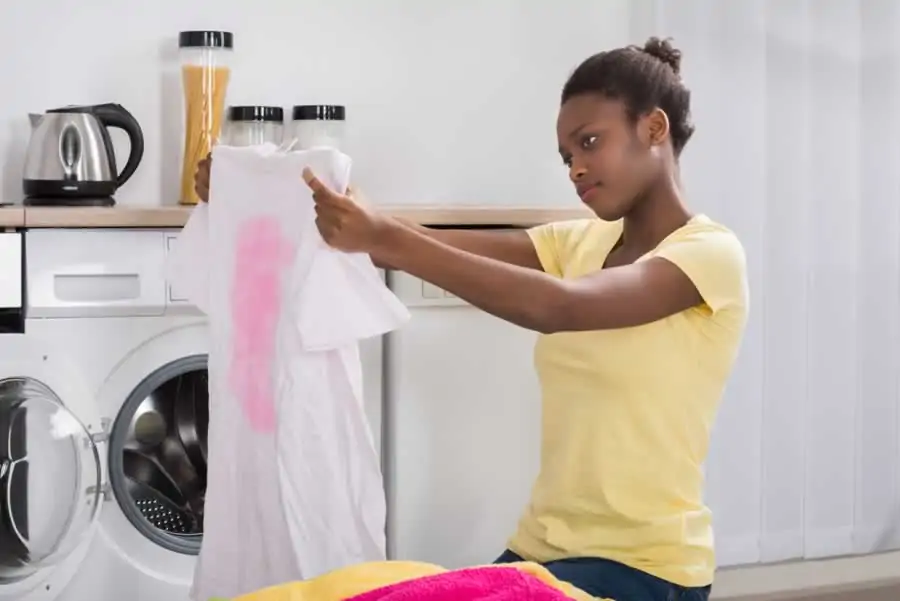
DIY Chlorine Free Bleach
A couple of years back we made a video where we made a DIY chlorine-free bleach. The whole CMS team went down to the basement to film the video, we had all of the ingredients—lemon, washing soda and all kinds of other stuff. Basically, you blend everything up and end up with this disgusting looking slurry. You dump it in a bucket, add some hot water, throw in your garments and then let it sit overnight. “There is no way that this is going to work!” was the general consensus. In the morning, however, we cleaned it off, laundered the shirt and… wow! Snow white. It worked like a charm.

Hydrogen Peroxide Cleans Cookie Sheets!
We recently did a video all about uses for hydrogen peroxide, that miracle stuff in the brown bottle. One of the cleaning life hacks that we kept coming across was this magical ability for hydrogen peroxide and baking soda to remove baked on and carbonized grease from cookie sheets. This is actually a really big cleaning challenge—no question about it. So, we put it to the test. We followed all the instructions. We did all the things: apply the mixture, let it sit, scrub it a little, etc. A ton of people claimed this hack worked like magic. For us, it was nothing short of absolutely not-magical. You could get the same results using just baking soda by itself. In other words, this hack was a fail.
Compressed Air
We came across a hack that used compressed air to clean tough to reach areas—dirt in window sills, dusty air vents, that kind of stuff. So, we gave this one a test and the thing is, does it work? Yes. It gets stuff out of cracks and crevices. The problem is, it gives you an explosion of dust and dirt that you will then just have to vacuum up anyway. So, while technically it does work, it’s not really saving you time which is what a hack is supposed to do. So, we’re going to mark this one down as “sort-of-works”, but I think there is a better way that you could accomplish these tasks.

Shower Head Cleaner
If you have a crusty shower head that’s not working properly, you’ve likely seen the hack that tells you to soak it in vinegar overnight. Does this actually work? Well, we’ve done it several times at the CMS HQ and we’ve spread the good word—this hack really works.
All you have to do is take some vinegar (if you have full strength vinegar that’s even better), fill a bag with it and tie off the bag on top of your shower head. Let it soak overnight and do its magic. Vinegar has the ability to break down hard water and mineral deposits, all of the things that are causing blockages to build up in your shower head. The next morning just give it a quick rinse and you’ll see, your shower head is running perfectly.
Is there a hack that you are just so unsure of that you would like to see us test? Let us know in the comments down below.
Looking for a BETTER & EASIER Way to Clean Your Home?
Cleaning Expert Melissa Maker is here to help with her game-changing 3 Wave Cleaning System that will help you clean your house faster and easier than you ever thought possible!



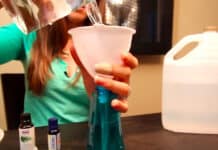
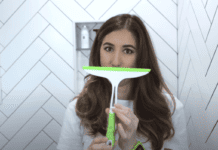








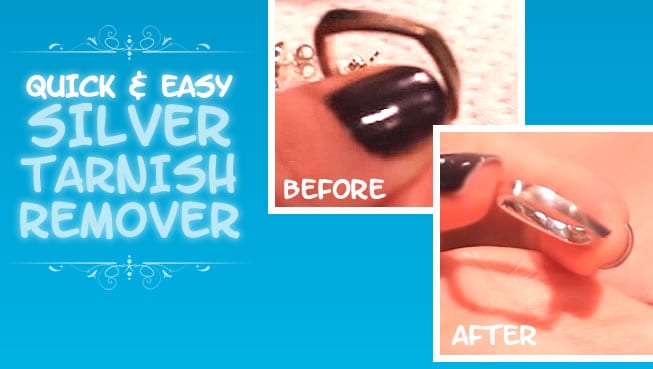


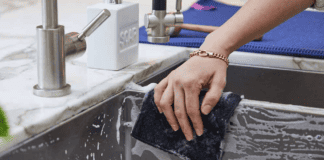
A paste of hydrogen peroxide and cream of tartar works like magic to remove baked on/carbonized grease! I spread it on after rinsing the item to get it wet and let it stay on for a few hours or overnight. I lightly scrub it off with a wet Dobie or net covered sponge: perfectly clean with next to no effort.
I love this post! I really appreciate ideas that make my cleaning routine lighter. Thanks for all these great tips!
The tanks system on the ladybug, how much more does it disinfect then other steam cleaners? I can’t fully understand
how about a porcelain-tub-cleaning-trial? What works best on a vintage tub; Dawn detergent, 3%HP, Cascade, washing soda? I never understand how cleaning humans can cause so much dirt! Plus, Spouse will lose no time in putting a fiberglass, modern-muddled tub in if my beloved, old porcelain gets pits are irremovable stains.
Agreed. I have the best shaped and depth tub. It is rather unfortunately factory glazed a groovy dark brown. This means you can see every hard water stain and all the skin flakes. It also means it never looks clean. I have tried everything.
Great tips
I liked the hydrogen peroxide using it on backed on cookie sheet. I will have to try this.
I see lots of cleaning hacks that involve baking soda and vinegar together, but I have also seen sites where they say that combination isn’t any more effective than using one of the two by itself. What do you think?
Baking soda is alkaline, and vinegar is acidic, so they neutralize one another. Yes, it will fizz, but that doesn’t necessarily mean cleaning power.
Love this article. It;’s good o get the truth
If you wade thru my comment above, you’ll find one hack I’d like you to test: vitamin C (or citrus juice) vs. other common kitchen acids (vinegar, yogurt) in keeping cut apples from browning over, say, overnight. I know they’ll be equally effective over an hour or so.
I run into stuff online all the time that I just KNOW won’t work, or at least won’t work better (& sometimes works worse) than it would if you left out some of the ingredients. I’ve seen countless times cleaning formulas that call for an irrational mixture of acid & base, and that sometimes will generate gas when mixed, i.e. a mess; mixing an acid & baking soda IN SITU (in a clogged drain) or maybe AT THE LAST MINUTE could help if fizzing is useful in an application, otherwise makes no sense. Acids with soap (actual soap soap, I mean) just turn it into fatty acid that gunks stuff up rather than cleaning it. I doubt most of the people making up or passing along those recipes have tried them. Instead they just figure acids like vinegar are good in some cleaners, alkali like baking soda are good in others, they must be even better when mixed! Sometimes the product will still work because there’s an excess of either acid or base in it, but it’s DESPITE the mixture, not because of it — and it’s funny to read about how you have to let the fizzing stop before you bottle it!
A recipe keeps going around, with minor variations, for bubble bath based on actual soap soap. Won’t work unless the bath water’s fully soft, or you use enough to soften all the water, which in some cases can be a huge amount in a bathtubful. No matter, if you succeed in making bath water sudsy with soap, it’s going to be harsher and more defatting to skin than almost any commercial bubble bath, shampoo, or hand dish detergent. The blog-and-comment pages on these recipes are full of comments that it didn’t work for them. Sometimes the person putting forth the recipe had soft water, but often I suspect they just never tried it — or they tried it as body wash (works fine because you use it with only a little water), saw all the lather it made, and figured it must be able to suds up a bathtub too.
There are recipes for bubble bath that do work calling for shampoo, water, and salt. They’d work just as well without the water and salt. Adding the water and then salt can be a fun science activity for children showing how viscosity can be modified, but for making a practical product it’s a waste.
Then there are the recipes for machine laundry detergent. They’re all somewhat alkali-heavy, in some cases extremely so, and light on the soap. While these will work if you use enough, they’re hard on the fabrics. But many recipes call for using an amount that has an insufficient amount of soap in it to work much better than plain water; because the alkali are diluted also, they won’t be damaging, but don’t clean either. They’re a throwback to cleaners of long ago, when people washed clothes infrequently and fabrics were heavier. The alkali they use (borax and washing soda) were discovered about a century ago to be less effective and more damaging.alkali for laundering when used in excess, compared to a small amount of a moderate-alkalinity sodium silicate. And the only reason the recipes save money per washload is by skimping on the soap in them! Meanwhile the faster wearing-out of the clothes and linens takes time to manifest.
As to keeping cut apple surfaces white looking, in practice it’s not ascorbic acid doing that by antioxidant effect, but by mere acidity. So if you don’t have citrus fruit to run your knife thru before slicing an apple, vinegar’s just as good (practically any salad dressing you can get the cut pieces into quickly), as long as you’re not preparing the apples too far ahead. I haven’t tested to see if vitamin C has an advantage over other acids after a longer time. Meanwhile if you’re slicing apples for cooking, don’t bother trying to keep them from browning; they’ll do that anyway, and taste just the same.
Truth!
I can’t explain more. You’ve explained very well in details.